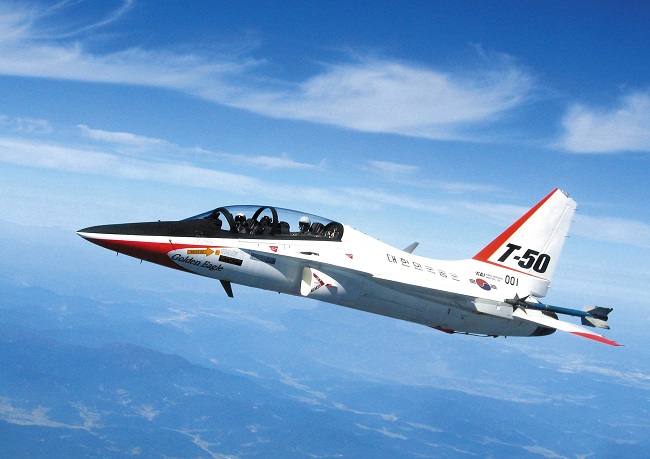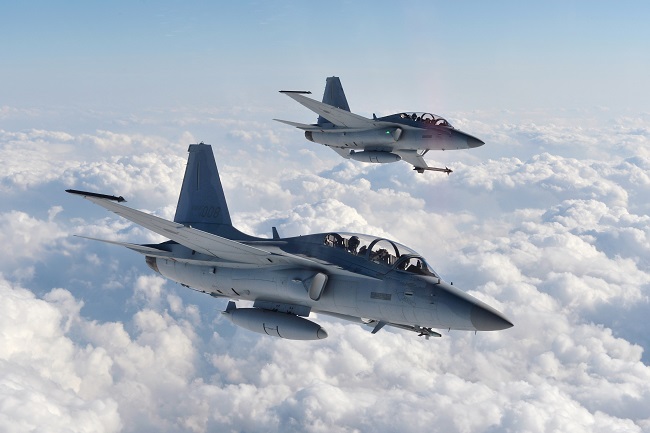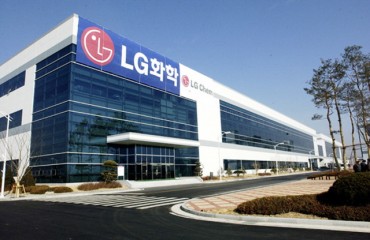SEOUL, June 24 (Korea Bizwire) — Korea Aerospace Industries Co. (KAI), South Korea’s sole aircraft manufacturer, is seeing new opportunities for aircraft deals from Eastern Europe and developing countries amid the ongoing war in Ukraine, a company executive has said.
Demand for South Korean aircraft is on the rise, particularly from countries that need to beef up their self-defense capabilities or need to refill their depleted weapons stockpiles following arms support to Ukraine.
“As instability grows in a specific region, countries that feel their own security vulnerabilities are moving to increase defense spending and purchase military assets like fighter jets for stronger independent defense capabilities,” Lee Bong-keun, vice president and general manager in charge of KAI’s international business division told Yonhap News Agency in a recent telephone interview, in an apparent reference to the Russian invasion of Ukraine.
This year, many countries have communicated interest in Korean aircraft, such as the T-50 advanced trainer jet and the FA-50 light combat aircraft, to KAI by phone, video conference call and other channels, the executive said.
“Clients are looking for mature, proven and cost-effective aircraft. The FA-50 has outstanding merits (in terms of those aspects) as the South Korean Air Force has made a number of flights with the aircraft,” Lee said, adding dozens of FA-50s have been exported.
The FA-50 can serve as not only advanced trainer jet but as a light attacker with some weapons on it and comes at a modest price. That’s why the Korean aircraft is preferred in developing countries.
The FA-50 is a T-50 trainer jet’s hybrid version for light combat purpose.
The T-50 series, including the FA-50, are “multi-role” aircraft as they help dramatically reduce the time and costs in transferring pilots to higher-level fighter jets, such as F16 and F30, the Korean aircraft company said.
“Among others, the T-50 series share similar DNA with F16 and F30 in terms of systems and operations so it requires a sharply lower number of sorties (or flights) during aircraft transfers,” Lee said.
The T-50 made a virgin flight 20 decades ago and the initially produced T-50s were deployed to the Korean Air Force from December 2005. KAI has exported 60 T-50s, 12 FA-50s, and 84 KT-1 basic trainer jets since 2011.
During the Dubai Air Show in November, KAI announced its goal of exporting more than 1,000 units of the T-50 series in the following 10 years helped by rising demand for Korean aircraft.
KAI expects the “teaming agreement” signed with Lockheed Martin early this month will help achieve the sales target given that the U.S. Navy and Air Force are expected to begin the bidding process from 2024 to adopt an estimated 500 trainer jets.
“We are confident (about winning the projects) because our aircraft have a proven track record of performance, operations, and utilization rate. Most of all, we will continue to cut costs, improve performance, maintain stable operations to present high-performance aircraft at reasonable prices to the U.S. military,” Lee said.
Any U.S. deal would be a “game changer” in the market, paving the way for KAI and Lockheed Martin to win deals in the global trainer jet and light attack aircraft markets, which are estimated to reach over 500 units, he said.
The company is in talks with countries in Asia, Europe and the Middle East to export its aircraft, with deals in Central Europe and Africa showing some progress, KAI said.
Brokerages said the Russia-Ukraine conflict has changed the landscape of the defense product market and KAI will see more export opportunities for its T-50 and FA-50 jets over the 2022-2024 period.
Asked about latest developments in the competition to win Malaysia’s fighter procurement project, Lee declined to elaborate on the deal citing the sensitivity of the issue.

Lee Bong-keun, vice president and general manager in charge of Korea Aerospace Industries’ international business division. (Yonhap)
Daiwa Securities said the imminent opportunity will be in Malaysia, which will award its light combat aircraft project this year for the purchase of 18 units worth $1 billion.
“We think the Ukraine-Russia conflict will also open up order opportunities in new markets such as Eastern Europe and other emerging countries as the region’s dependence on Russia-made defense products is likely to shrink,” Mike Oh, an analyst at Daiwa, said in a research note.
KAI recently signed a deal to export 2 units of the FA-50 to Senegal, according to Daiwa. KAI declined to comment on the deal.
It has an order backlog valued at 20 trillion won (US$15 billion).
Shares in KAI jumped 55 percent to 50,400 won this year through Thursday, far outperforming the broader KOSPI’s 22 percent loss during the same period.
In the coming years, the company will focus on winning export deals to prove the quality of its aircraft ahead of the U.S. projects.
“Our strategy is to develop ‘solutions’ to give our clients the best perception of our products while managing difficulties such as supply chain disruptions amid COVID-19,” he said.
(Yonhap)







